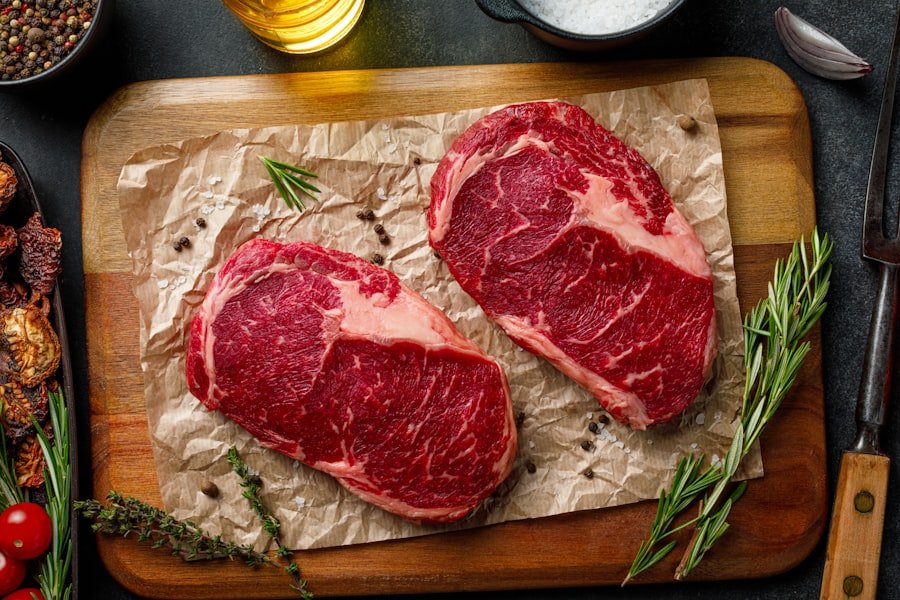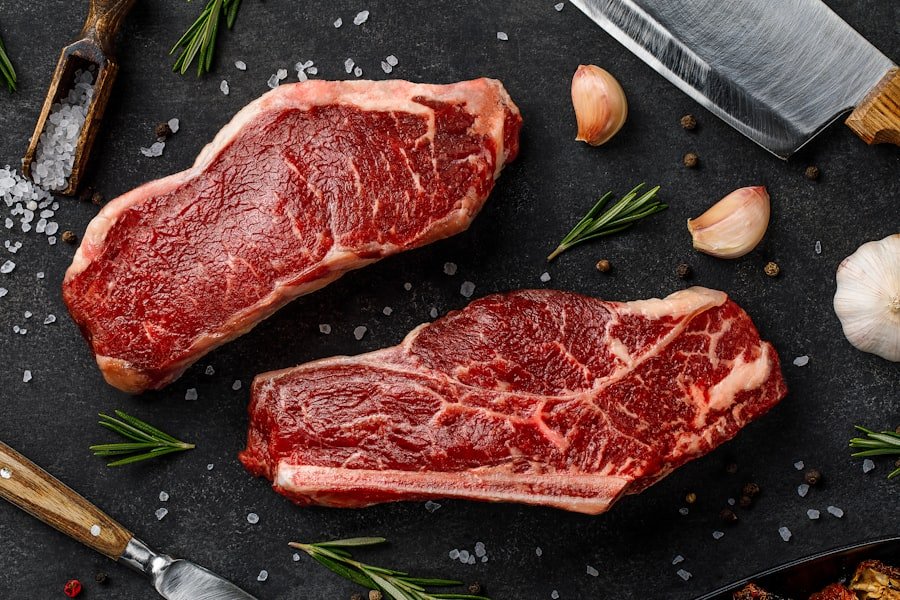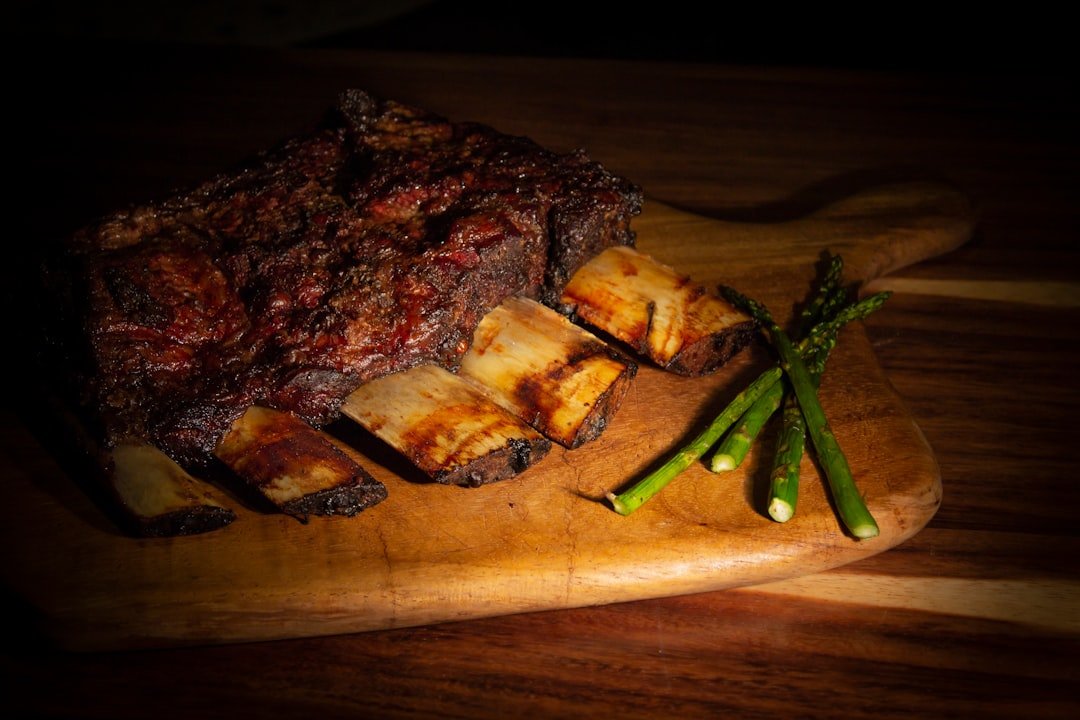Beef shank is a cut of meat that often flies under the radar in culinary discussions, yet it holds a treasure trove of flavor and texture that can elevate a dish to new heights. This cut comes from the leg of the cow, specifically the area around the shank bone, which is rich in connective tissue and muscle. The unique composition of beef shank makes it ideal for slow cooking methods, allowing the tough fibers to break down and transform into a tender, succulent delight.
When prepared correctly, beef shank can be the star of a hearty meal, offering a depth of flavor that is both satisfying and comforting. The appeal of beef shank lies not only in its taste but also in its versatility. It can be used in a variety of dishes, from traditional stews to modern interpretations that incorporate global flavors.
The marrow found within the bone adds an additional layer of richness, making it a favorite among chefs and home cooks alike. As more people seek out affordable cuts of meat that deliver on flavor, beef shank is gaining recognition as a go-to option for those looking to create memorable meals without breaking the bank.
Key Takeaways
- Beef shank is a flavorful and versatile cut of meat that is perfect for slow cooking and braising.
- When selecting beef shank, look for a cut that is well-marbled and has a rich red color. It’s important to properly trim and prepare the beef shank before cooking.
- Beef shank can be cooked using various methods such as braising, slow cooking, pressure cooking, and roasting, each method offering a unique flavor and texture.
- Key ingredients for a flavorful beef shank dish include aromatics like onions, garlic, and herbs, as well as liquids like broth, wine, or tomatoes for braising.
- Follow step-by-step instructions for cooking beef shank to ensure a tender and flavorful result, and consider serving it with sides like mashed potatoes, polenta, or crusty bread.
Selecting and Preparing the Beef Shank
When it comes to selecting beef shank, quality is paramount. Look for cuts that have a deep red color with a good amount of marbling, as this fat will render during cooking, imparting flavor and moisture to the meat. The presence of bone is also essential; it not only contributes to the overall taste but also helps in achieving a rich broth if you plan to make a soup or stew.
If possible, purchase beef shank from a reputable butcher who can provide insight into the source of the meat and its quality. Preparation of beef shank is relatively straightforward but requires some attention to detail. Begin by trimming any excess fat from the surface, as this can lead to an overly greasy dish if left unaddressed.
However, do not remove all the fat; some is necessary for flavor and moisture retention during cooking. After trimming, consider marinating the beef shank for several hours or overnight. A marinade that includes acidic components like vinegar or citrus juice can help tenderize the meat while infusing it with additional flavors.
Once marinated, pat the meat dry with paper towels to ensure a good sear when cooking.
Cooking Methods for Beef Shank

Beef shank is best suited for slow cooking methods that allow the tough fibers to break down gradually. Braising is one of the most popular techniques for preparing this cut, as it involves cooking the meat in a small amount of liquid over low heat for an extended period. This method not only tenderizes the meat but also allows it to absorb the flavors of the cooking liquid, resulting in a deeply flavored dish.
A Dutch oven or heavy pot is ideal for braising, as it retains heat well and distributes it evenly. Another effective method for cooking beef shank is simmering in a broth or stock. This technique is particularly useful when making soups or stews, as it allows the meat to cook gently while infusing the broth with its rich flavors.
For those who prefer a quicker cooking method, pressure cooking can also be employed. Using an electric pressure cooker can significantly reduce cooking time while still achieving tender results. Regardless of the method chosen, patience is key; allowing ample time for cooking will yield the best results.
Ingredients for a Flavorful Beef Shank Dish
| Ingredient | Quantity |
|---|---|
| Beef shank | 2 lbs |
| Onion | 1 large |
| Garlic | 4 cloves |
| Ginger | 1-inch piece |
| Star anise | 2 pieces |
| Cinnamon stick | 1 |
| Soy sauce | 1/4 cup |
| Brown sugar | 2 tbsp |
| Beef broth | 4 cups |
| Salt | To taste |
| Black pepper | To taste |
To create a truly flavorful beef shank dish, one must consider not only the meat itself but also the accompanying ingredients that will enhance its natural taste. Aromatic vegetables such as onions, garlic, carrots, and celery form the foundation of many recipes. These ingredients release their flavors during cooking, creating a savory base that complements the richness of the beef shank.
Fresh herbs like thyme, rosemary, and bay leaves can add depth and complexity to the dish, while spices such as black pepper and paprika can provide warmth and subtle heat. The choice of liquid used in cooking is equally important. Traditional recipes often call for beef broth or stock, but wine—red or white—can also be incorporated to add acidity and richness.
Tomatoes, whether fresh or canned, contribute both flavor and acidity, balancing out the richness of the meat. For those looking to experiment with global flavors, consider adding ingredients like soy sauce for umami depth or coconut milk for a creamy texture. The combination of these elements will create a harmonious dish that showcases the beef shank beautifully.
Step-by-Step Instructions for Cooking Beef Shank
To begin cooking beef shank, start by searing the meat in a hot pan with a bit of oil. This step is crucial as it develops a rich brown crust on the surface of the meat, enhancing both flavor and appearance. Sear each side for about 4-5 minutes until golden brown before removing it from the pan and setting it aside.
In the same pan, add chopped onions and garlic, sautéing them until they become translucent and fragrant. This process will deglaze the pan, lifting any flavorful bits stuck to the bottom. Next, return the seared beef shank to the pot along with your choice of vegetables—carrots and celery work particularly well—and any herbs or spices you wish to include.
Pour in your chosen liquid—beef broth or wine—and bring it to a gentle simmer. Cover the pot with a lid and transfer it to a preheated oven set at 325°F (163°C) or continue cooking on low heat on the stovetop. Allow it to cook for several hours; typically, 2-3 hours will suffice for tender results.
Check periodically to ensure there’s enough liquid in the pot; if necessary, add more broth or water.
Serving Suggestions for Beef Shank

Classic Pairings for Beef Shank
Once your beef shank has reached tender perfection, it’s time to think about how to serve this delectable dish. One classic approach is to serve it over a bed of creamy mashed potatoes or polenta, which will soak up the flavorful juices from the meat. Alternatively, consider pairing it with hearty grains like farro or barley that can complement the robust flavors while adding texture to your meal.
Adding Freshness to the Plate
For those looking to add freshness to their plate, consider serving beef shank alongside sautéed greens such as kale or Swiss chard. A simple salad with bitter greens dressed in vinaigrette can provide a refreshing contrast to the richness of the meat.
Finishing Touches
Additionally, garnishing with fresh herbs like parsley or chives can brighten up the dish visually and add an aromatic touch that enhances its appeal.
Tips for Enhancing the Flavor of Beef Shank
To take your beef shank dish to new heights, consider incorporating additional layers of flavor throughout the cooking process. One effective technique is to use aromatics not just at the beginning but also during different stages of cooking. For instance, adding fresh herbs towards the end of cooking can preserve their vibrant flavors and aromas compared to those that are cooked down for long periods.
Another way to enhance flavor is through seasoning at various stages. While it’s common to season meat before searing it, don’t forget to taste and adjust seasoning throughout cooking. Adding salt gradually allows you to control how much is absorbed by the meat and vegetables without overwhelming them initially.
Additionally, consider finishing your dish with a splash of acid—such as lemon juice or vinegar—just before serving; this brightens up flavors and adds complexity.
Variations and Customizations for Beef Shank Recipe
The beauty of beef shank lies in its adaptability; you can easily customize recipes based on personal preferences or available ingredients. For instance, if you enjoy spicy food, consider adding chili peppers or hot sauce during cooking for an extra kick. Alternatively, if you prefer milder flavors, you might opt for sweet elements like caramelized onions or roasted garlic.
Cultural influences can also inspire variations on traditional recipes. For example, you could create an Asian-inspired dish by incorporating soy sauce, ginger, and star anise into your braising liquid. Alternatively, Mediterranean flavors can shine through with olives, capers, and sun-dried tomatoes added during cooking.
The possibilities are endless; experimenting with different ingredients allows you to create unique dishes that reflect your culinary style while showcasing the versatility of beef shank as a star ingredient.
